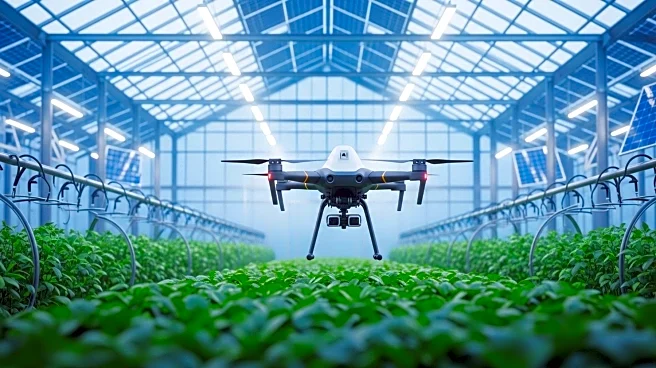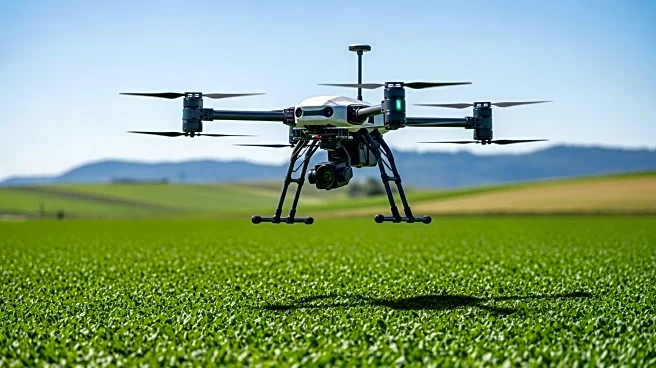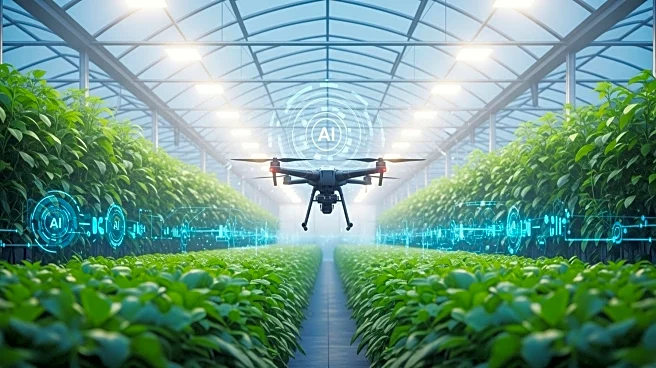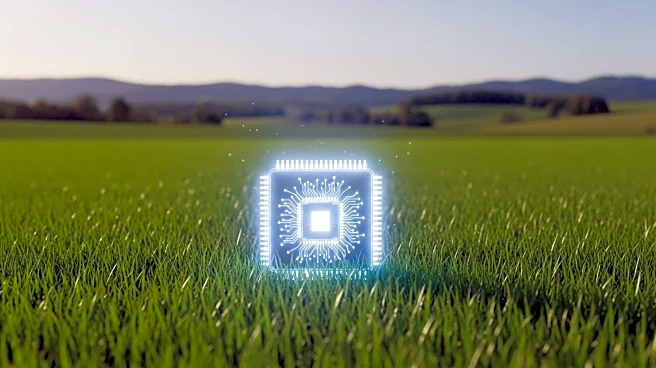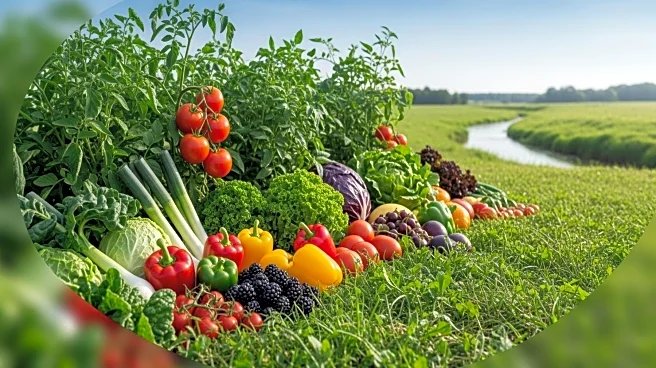What's Happening?
The agriculture sector is experiencing a transformation driven by generative artificial intelligence (AI), with the market expected to grow from USD 269.78 million in 2025 to USD 2,012.90 million by 2034. This growth is fueled by precision farming, agricultural robotics, and machine learning-driven analytics. Precision farming optimizes resource use and maximizes yields using real-time data from sensors, drones, and satellites. Agricultural robotics, with a CAGR of 31.2%, addresses labor shortages and rising operational costs through automation. Machine learning processes vast datasets with adaptability and accuracy, holding 42.5% of the market share in 2024. North America leads the market, contributing over 48% of the revenue share, while Asia and Sub-Saharan Africa are emerging markets with tailored AI solutions for smallholder farmers.
Why It's Important?
The integration of AI in agriculture presents significant opportunities for investors, with startups like Cradle Bio, Nexa Labs, and Solinftec leading innovation. These companies offer solutions ranging from AI-driven protein engineering to livestock management and precision agriculture. The market promises high returns, with small farmholders reporting a 120% ROI and large-scale operations achieving 150% ROI. However, challenges such as high upfront costs, regulatory hurdles, and geographic scalability remain. The broader generative AI market is projected to reach USD 220 billion by 2030, suggesting a path to profitability for scalable agri-tech ventures.
What's Next?
Investors are advised to focus on startups demonstrating measurable ROI, regulatory agility, and cross-regional scalability. As the market matures, early-stage investments in AI-driven agri-tech are expected to yield substantial returns. The convergence of generative AI and agriculture aligns with global sustainability goals, making it a strategic imperative for capital allocators.
